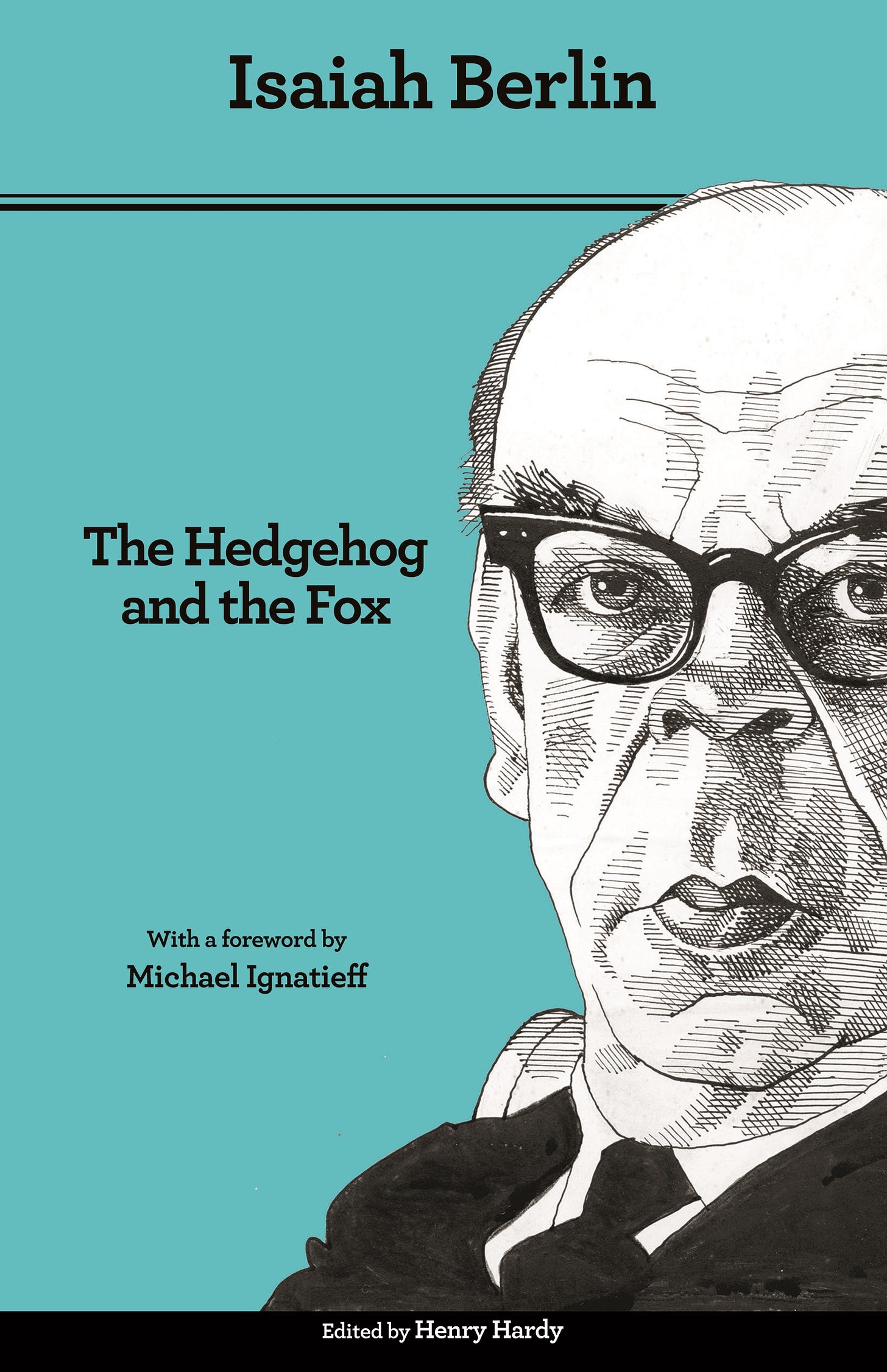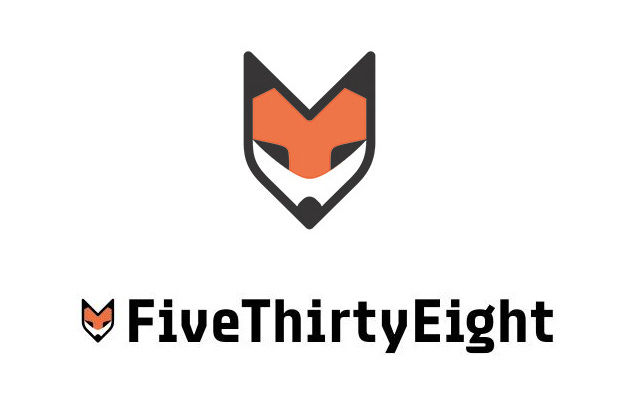Your state of mind - your philosophy of business and marketing - is something that can be re-evaluated if you want to see your markets in a fresh, new way.
Digital Pluralism is a new way of thinking about your markets that can reveal insights that lead directly to growth. But it starts with addressing the very way we understand markets, which is understanding human behavior.
Russian-British philosopher Isaiah Berlin described a simple way of understanding human behavior in 1953 that is now all of a sudden more relevant. He made sense of the world by distinguishing two modes of thought: “monistic” and “pluralistic.” He explored this distinction in his most famous work, The Hedgehog and the Fox.
In Berlin’s book, the hedgehog represents monistic thinking, which focuses on knowing “one big thing.” Monistic hedgehog thinking involves believing in a singular truth that can explain everything to everyone. The fox represents pluralistic thinking - it knows many things. Pluralistic fox thinking involves accepting different sets of truths that coexist.
Both modes of thought have limits - the monistic hedgehog can’t account for what doesn’t fit with its “one big thing,” and the pluralistic fox struggles to piece together its many different things into a cohesive whole.
It can sound a bit ethereal and theoretical, but I guarantee there are business growth ideas here for you. Here’s how it works.
Today’s Business and Marketing Practices Are “Hedgehog”
A lot of our customers are not like us, yet for some reason, they buy our stuff - and we need more of that. So, we look at market facts and customer profiles as we try to make our products more attractive. We “position” our products for the market based on a clear, singular idea about a problem we solve. It may be the headline we repeat to the market.
We declare an answer, a way of thinking and talking about our products until we feel it’s not working as well as we hoped, and we move on to the next answer. Sometimes, the growth success we seek seems always just on the horizon, and we just need to find that right “one big thing.”
Isaiah Berlin would refer to this as a monistic hedgehog way of thinking, where you seek to advocate a singular truth and impose it upon the market through your brand, products, and communications. As business people, we then sit there wondering why everyone in our market doesn’t agree with our “one big thing.”
People who work in advertising tend to want a singular truth or idea because it focuses their work when delivering an advertising campaign. It seems like a logical thing to do, but is it the answer today?
Consider the Fox
Contrast our monistic habits with those of Berlin’s pluralistic fox, who refuses to focus on one big thing and prefers knowing many things to understand the world better. The fox doesn’t try to reconcile the many things - they coexist. They are all relevant.
Certainly, businesses can appear to be a little foxy by breaking down their markets into components or “segments.” Still, these efforts typically stem from the same monistic philosophy of the hedgehog. What’s more, today’s market segmentation exercises rarely change the core efforts of a business to attract new customers because, more often than not, the segments get mashed together under one big truth. In many cases, market segmentation becomes window dressing on a monistic hedgehog strategy.
The strength of a monistic hedgehog strategy is in its singularity and its ability to be clear, simple, and easy to manage. But is it working? And if many of our customers are not like us, then who is coming up with these big singular truths?
Knowing “one big thing” can be presumptuous - that an entire market will fall in line with one idea we come up with. A singular truth most likely limits our business growth because it mutes markets where that one monistic hedgehog idea doesn’t work. Of course, there are great products that break through to many people and instantly become household names. Lucky them. There aren’t many.
The Fox Has a Different Stance Toward the Market
The first step toward a foxy strategy is to shift your “stance” when thinking about your market. In the monistic hedgehog strategy with one big idea, you look at customers through your eyes to figure out what that one idea is. Customers are “over there” as you gaze at them, looking for that big insight.
In a foxy pluralistic strategy, you look at your business through customers’ eyes to understand what they believe that idea could be. You step outside of your business to live in their shoes and think the way they think. When you do, you discover that distinct groups of customers see your business in fundamentally different ways.
I don’t mean these groups focus on different features or buy your products to do different things - they see your business and products through entirely different lenses. They have different sets of values and belief systems. They see the world differently. But you can only discover this if you look through their eyes at your business and see them as a collection of groups.
When you become more foxy, you unlock insights across multiple value groups, and your market expands using groups as building blocks. You create a far stronger fit with more customers because your business aligns better with the values and belief systems of each of the groups.
A foxy strategy is not perfect, and it’s not without its detractors or potential problems of its own.
Not Everyone Will Agree With a Foxy Pluralistic Strategy
The most significant barrier to adopting a pluralistic foxy stance is not one of resources. It’s recognizing that different groups have different values and that they are all relevant. This may contrast with the values and beliefs held dear by your business and its teams. An organization’s culture may or may not allow for this kind of thinking. A foxy pluralistic strategy requires letting go of - for the sake of business growth - the idea that what you believe to be true is “right.”
Over the past few decades, a few prominent business people have wrestled with a fox vs. a hedgehog strategy using Berlin’s ideas. In his 2001 book Good to Great, James Collins argued for acting like a hedgehog to accelerate growth and make the leap to “great.” Meanwhile, political psychology professor Philip Tetlock analyzed the accuracy of experts and forecasters using the hedgehog-fox model in his 2017 book, Expert Political Judgement. He found that hedgehogs make poor forecasts because they see data through too narrow a lens.
Then there is famous statistician and writer Nate Silver of fivethirtyeight.com fame. He argued that you have to be more “foxy” in analysis. The logo for his website even included a fox in a nod to Isaiah Berlin’s book (acquirer ABC News has recently replaced the logo, but you can still see it with online searches).
So there are arguments for and against each strategy, and you have to decide for yourself which is better for yourself and your business. But significant changes are also taking place in the marketing landscape, making the pluralistic fox strategy more compelling.
Digital Media Now Demands Digital Pluralism
Increasing privacy pressures are transforming the marketing landscape into one that is moving away from individual tracking to one focused on groups. Google acknowledged this when it announced that in 2024, it will eliminate digital “cookies” that identify and follow people around the internet. The replacement is the Federated League of Cohorts (FloC), which is just techno-media speak for using groups.
Today, half of all digital signals used to identify, define, and chase people online are already gone. Apple dealt its blow when it forced mobile phone users to opt-in to tracking (only 20% did). So, the entire digital landscape is undergoing seismic shifts and is evolving in a direction that demands businesses to become more foxy. But which groups or “cohorts” make the most sense?
The most powerful way to think about groups is through their values and belief systems - the very way your customers see the world and what they believe to be true. Values and belief systems are the starting point for decision-making, so we need a form of Berlin’s foxy pluralism applied to today’s evolving digital landscape - Digital Pluralism.
Digital Pluralism is “digital” because digital media is very good at reaching distinct groups of people with fundamentally different values. And you don’t need tracking technology to build the groups. America today has largely sorted itself along value and belief system lines geographically, enabling one of the oldest forms of targeting to re-emerge: the good old five-digit zip code. It’s not perfect, but for defining markets from a values perspective, it’s now very good.
Applying Foxy Digital Pluralism To Your Business
The first question to answer when considering a foxy pluralistic strategy is, “What are the value groups that make up my market?” This newsletter - Red and Blue Customers - goes into a fair amount of detail about two groups, liberal and conservative customers, who have distinct values and belief systems that lead to different purchases.
Liberal and conservative customers have different values when it comes to the future, empathy, change, exploration, social proof, status, and much more. All of these values affect which brands they buy from. You can find many more values like these if you scan past issues of this newsletter. At Market Ideology, we’ve cataloged fifty-six values for liberal and conservative customers together with twelve shared values.
So, a foxy pluralistic market strategy starts with the recognition that these two groups have distinctly different values, and both may be relevant to your business. Both are of about equal size nationally and have similar spending power when you balance income with the cost of living.
But that’s not necessarily enough to create a robust picture of value groups.
The Geography of Value and Belief Systems
Now, let’s take the foxy value systems one step further - where your customers live. A few months ago, I got involved in a project called lifemind.ai, where the goal is to automate the application of customer worldview and values using ChatGPT within a self-service platform. As part of this project, lifemind focused on how geography shapes customer values.
Lifemind developed a map of the United States that reflects sixteen “Digital Marketing Regions (DMRs),” each with distinct values that can build on liberal and conservative values. The regions were derived using the idea of the “effect of first settlement,” first developed by cultural geographer Wilbur Zelinsky in the 1970s. The idea is that local values are mostly derived from those of the original settlers, even if they represented a small group hundreds of years ago. So, if you trace a region’s historical roots, you can derive today’s values from those who first settled in the area.
Colin Woodard explored this idea in great detail in his popular book, American Nations. Woodard developed a map to reflect regional values as a result of his research. Since his book came out, new data has emerged to support the concept, so lifemind created a more discrete map using more recent data and designed it for businesses and marketers.
Here is the final map.

You’ll notice that the “regions” don’t necessarily have typical borders. That reflects how settlement unfolded in the United States, which often jumped over geographic areas. Digital media is perfectly adept at dealing with these types of regions.
This map helps explain why you feel like you’re in a different place when you travel across the United States. For example, if you’ve ever driven across the Chesapeake Bay Bridge from Washington, DC, to Chestertown, Maryland, you know you are moving into a new region.
Using this map for that trip, you are crossing from Northeastern Tip to Chesapeake Shores, which is sometimes referred to as the tidewater area. As you travel, you can sense a shift in values, which is formed initially by seeing what people wear, what cars they drive, the food they eat, and much more. In other words, product purchases often reflect regional values. As British social anthropologist Mary Douglas once said, products are “badges within a cultural context.”
Spend more time in the Chesapeake Shores region, and you realize it has a deep connection to water - it’s woven into the history and values of the region. In Rock Hall, Maryland, Santa Claus arrives every year by boat. It’s just one value that can be tapped into when a business wants to speak with this market in a manner that makes products belong.
Digital Pluralism Has Multiple Dimensions
When you combine liberal and conservative values with regional values, you are better able to understand markets in a more foxy, pluralistic manner. You see your markets as several distinct populations that see your business differently.
Knowing which groups buy from you enables you to proactively shape your business, brand, products, and communications to what your markets value. Digital Pluralism gives you simple, powerful tools for demonstrating how your products fit into customer lives in each group, which will reduce customer acquisition costs and increase customer value—all without any privacy issues.
There will be times when you have to be more singular with your business, such as when developing your website or mobile app. These types of business assets are hard to customize for such distinct groups. But this doesn’t mean you have to adopt the “one big thing” of the monistic hedgehog. A more powerful approach is to combine the values of the populations creatively so each group can see something that makes your products belong in their lives.
When you adopt Digital Pluralism as a business and marketing strategy, you will find new ways to ignite business performance. You will also discover that you are gaining an understanding of markets that goes far deeper than any database profile or consultant PowerPoint deck. And you can do this yourself - it just takes the will to think about markets differently.
You can look at some basic information about your customers to see which groups they represent. Customer urbanicity will most likely indicate liberal versus conservative values, and comparing your customer geography to the DMR map will show the regions to focus on.
Business Is About Human Understanding
Just before he passed away, Isaiah Berlin commented on value pluralism in a way that crystallizes what this strategy is about. Of course, he was thinking about it more broadly as a way to think about humanity in general, but the potential application in business is clear:
I came to the conclusion that there is a plurality of ideals, as there is a plurality of cultures and of temperaments. I am not a relativist; I do not say, "I like my coffee with milk and you like it without; I am in favor of kindness and you prefer concentration camps" -- each of us with his own values, which cannot be overcome or integrated. This I believe to be false. But I do believe that there is a plurality of values which men can and do seek and that these values differ. There is not an infinity of them: the number of human values, of values that I can pursue while maintaining my human semblance, my human character, is finite -- let us say 74, or perhaps 122, or 26, but finite, whatever it may be. And the difference it makes is that if a man pursues one of these values, I, who do not, am able to understand why he pursues it or what it would be like, in his circumstances, for me to be induced to pursue it. Hence the possibility of human understanding.
Human understanding is at the heart of any business success. The question becomes, should you be a hedgehog or a fox?




